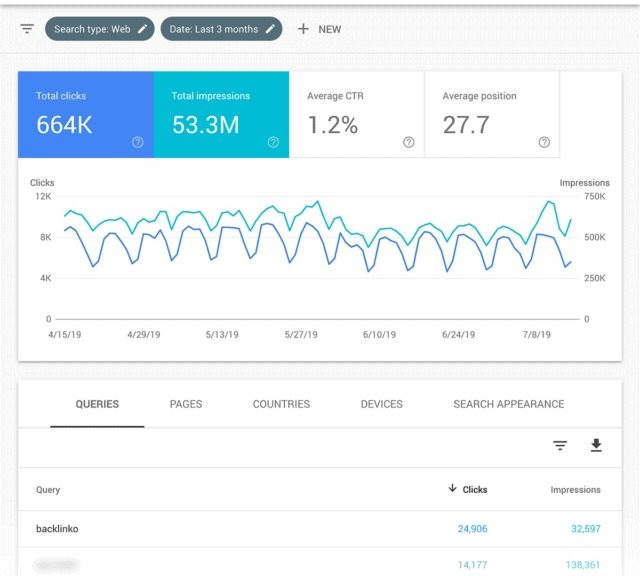Fundamentals of Website Development for Your Online Presence
Here is the best ways to Understanding the Fundamentals of Website Development for Your Online Presence. Website development is the backbone of your online presence, encompassing everything from the structure of your site to its visual design. Understanding the fundamentals involves recognizing the importance of user experience, responsive design, and performance optimization. Your website should be not only visually appealing but also functional across various devices and platforms.
Moreover, a strong understanding of coding languages, such as HTML, CSS, and JavaScript, can significantly enhance your ability to create a unique and tailored user experience. Investing time in learning these fundamentals can pay off in the long run, as a well-developed website fosters trust and engagement with visitors.
Fundamentals of Website Development for Your Online Presence
In today's digital age, having a strong online presence is crucial for businesses and individuals alike. A well-designed website is often the first point of contact between you and your potential customers. Whether you're a small business owner, a freelancer, or a large corporation, understanding the fundamentals of website development can help you create a site that effectively represents your brand and engages your audience.
In this guide, we will cover the essential components of website development to help you establish a successful online presence.
1. Define Your Website's Purpose and Audience
Before you start developing a website, it's essential to define its purpose and target audience. Knowing the purpose of your website helps you structure its content, design, and functionality.
– **Purpose**: Are you creating an e-commerce store, a blog, or a portfolio? The website's goal should be clear from the outset.
– **Audience**: Understand your target audience and their needs. Consider their demographics, interests, and behavior to ensure the website appeals to them.
By identifying your goals and audience, you can tailor your website's design and content to meet your visitors' expectations, ultimately leading to better engagement and conversion rates.
2. Choose the Right Domain Name and Hosting Provider
A domain name is your website's address on the internet, and selecting the right one is crucial for branding and discoverability.
– **Domain name**: Choose a name that is short, memorable, and relevant to your business or brand. Avoid complex names or those that are difficult to spell. The domain should reflect what your website is about, making it easier for users to find you online.
– **Hosting provider**: Your hosting provider stores your website's data and makes it accessible to users. When choosing a hosting service, consider factors such as uptime, speed, customer support, and scalability. Popular hosting providers include Bluehost, SiteGround, and GoDaddy.
A reliable hosting provider ensures your website is available and loads quickly, which is critical for both user experience and search engine rankings.
3. Select the Right Website Platform
There are several platforms available for building a website, ranging from simple website builders to more advanced content management systems (CMS).
– **Website builders**: Tools like Wix, Weebly, and Squarespace offer easy-to-use drag-and-drop interfaces that are ideal for beginners or small businesses. These platforms provide templates and customization options without requiring coding skills.
– **Content management systems (CMS)**: WordPress, Joomla, and Drupal are more flexible and powerful platforms, offering greater control over your website's design and functionality. WordPress is the most popular CMS, with thousands of themes and plugins available to extend its capabilities.
Choose a platform based on your technical expertise, budget, and the complexity of your website. Website builders are user-friendly but may have limitations, while CMS platforms offer more control but may require a steeper learning curve.
4. Design for User Experience (UX)
A great website design goes beyond aesthetics; it should focus on delivering a seamless user experience (UX). Users should be able to navigate your website with ease and find what they're looking for without frustration.
– **Responsive design**: Ensure your website is mobile-friendly. With the growing use of smartphones, your site must adapt to various screen sizes to provide a consistent experience across devices.
– **Intuitive navigation**: Make your website easy to navigate by organizing content logically. Use clear headings, menus, and call-to-action buttons to guide users through your site.
– **Loading speed**: Website speed plays a significant role in user experience. Optimize images, use caching, and choose a fast hosting provider to reduce load times. A fast website keeps visitors engaged and improves your chances of ranking higher in search engines.
A user-friendly design leads to higher user satisfaction, increases time spent on the site. So, you reduces bounce rates, which can all contribute to better overall performance.
5. Focus on Content Creation and SEO
Your website’s content is the primary way you communicate with your audience. High-quality, relevant content that addresses the needs of your visitors helps build trust and establishes you as an authority in your niche.
– **Content creation**: Whether it's blog posts, product descriptions, or multimedia content, make sure that your content is engaging and valuable. Use images, videos, and infographics to enhance your message.
– **Search Engine Optimization (SEO)**: Optimize your content for search engines to improve your website’s visibility. Use relevant keywords naturally in your headings, meta descriptions, and throughout your content. Implement best SEO practices like using alt text for images, having clean URL structures, and creating internal links between pages.
By combining well-crafted content with SEO strategies, you increase the chances of attracting organic traffic and reaching a wider audience.
6. Implement Security Features
Website security is a crucial aspect of development that protects your site and its users from malicious attacks, data breaches, and other cyber threats.
– **SSL certificates**: Secure Sockets Layer (SSL) certificates encrypt the data transmitted between your website and its visitors, ensuring that sensitive information, such as passwords and credit card details, remains secure. Websites with SSL certificates also display a padlock icon in the browser and use “HTTPS" instead of “HTTP," which helps build trust with users.
– **Regular updates and backups**: Keep your website’s software, plugins, and themes up to date to prevent vulnerabilities. Regularly back up your website so you can restore it in case of an issue or attack.
– **Firewalls and security plugins**: Implement firewalls and security plugins (Wordfence for WordPress) to block suspicious activities and protect against hackers.
It will also securing your website not only protects your business. But also reassures visitors that their personal information is safe while browsing or making purchases.
7. Test and Launch Your Website
Before launching your website, it’s important to thoroughly test its functionality across different devices, browsers, and screen sizes.
– **Cross-browser compatibility**: Ensure your website works correctly on popular browsers like Chrome, Firefox, Safari, and Edge. This ensures a consistent user experience, regardless of the browser used.
– **Mobile testing**: Test your website’s mobile version to confirm that it’s responsive and optimized for mobile users. Given the rise in mobile browsing, this is crucial for both user experience and SEO.
– **Usability testing**: Conduct usability tests to identify any navigation issues or broken links. You can ask friends, colleagues, or customers to test your site and provide feedback on its functionality and design.
Once testing is complete, and all necessary adjustments have been made, you can confidently launch your website.
8. Analyze and Improve Your Website Performance
After your website is live, monitoring its performance is essential for identifying areas of improvement and ensuring its success.
– **Analytics tools**: Use tools like Google Analytics to track your website’s traffic, bounce rate, and user behavior. These insights help you understand how visitors interact with your site and which areas need improvement.
– **Regular updates and improvements**: Continuously update your content and make improvements to your website based on user feedback and performance data. Regular updates help you stay competitive and ensure that your website remains relevant and engaging.
Analyzing your website’s performance allows you to make data-driven decisions and optimize your site for better user experience and conversions.
Build a Website That Enhances Your Online Presence
Developing a website requires careful planning and execution, but the effort pays off by establishing a solid online presence for your business or brand. By focusing on user experience, high-quality content, SEO, security, and regular maintenance, you can create a website that not only attracts visitors but also keeps them engaged and encourages conversions. Whether you’re starting from scratch or updating an existing site, following these fundamental principles will help you build a successful and effective online presence.
The Importance of SEO in Driving Traffic and Boosting Online Visibility
Search Engine Optimization (SEO) is crucial for increasing your website's visibility on search engines like Google. By optimizing your website's content, structure, and keywords, you can significantly improve your chances of ranking higher in search results. This increased visibility leads to more traffic and potential customers, making SEO a vital component of your online strategy.
Additionally, understanding the various facets of SEO, including on-page, off-page, and technical SEO, can help you create a comprehensive approach. Regularly updating your content and employing effective link-building strategies can further enhance your site's authority and relevance, ensuring sustainable growth in traffic.
Crafting Engaging Content: Techniques for Captivating Your Audience
Creating engaging content is essential for capturing your audience's attention and keeping them coming back for more. Techniques such as storytelling, using visual elements, and incorporating interactive features can elevate your content and make it more appealing. Tailoring your content to meet the interests and needs of your target audience is key.
Moreover, consistency in your tone and style helps build a recognizable brand identity. Regularly analyzing audience feedback and engagement metrics can provide insights into what resonates most with your readers, allowing you to refine your content strategy effectively.
Integrating Website Development and SEO for Optimal Performance
To achieve optimal performance, it’s crucial to integrate website development and SEO seamlessly. This means ensuring that your site’s architecture supports search engine crawling and indexing. Implementing clean code, fast loading times, and mobile optimization are essential elements that contribute to both user experience and search rankings.
Furthermore, collaborating between developers and SEO specialists can foster a shared understanding of goals and best practices. This synergy not only enhances site performance but also creates a more effective strategy for attracting and retaining visitors in the competitive online landscape.
Choosing the Right Online Services: What to Look for in a Provider
When selecting online services for website development, SEO, and content writing, it’s essential to consider several factors. Look for providers with a proven track record, transparent pricing, and testimonials from previous clients. Their expertise should align with your specific needs, whether that’s building a new website or improving your search engine rankings.
Additionally, consider their approach to customer service and support. A reliable provider will offer ongoing assistance and communication throughout the project, ensuring that your goals are met and adjustments can be made as needed. Taking the time to choose the right partner can significantly impact your online success.
In Conclusion
Therefore, building a successful website goes beyond aesthetics. However, it requires careful planning, understanding your audience, and integrating essential technical components. From defining your site’s purpose to implementing strong security measures, every step plays a crucial role in enhancing your online presence. By focusing on user experience, SEO, and continuous improvement, you can create a website that not only attracts visitors but also fosters engagement and drives conversions. A well-developed website is a powerful tool that helps you connect with your audience, grow your business, and stay competitive in the digital landscape.













